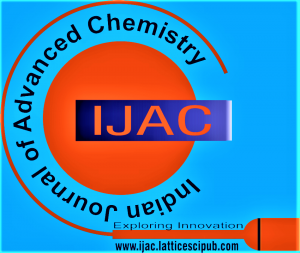![]()
Microwave-Assisted Synthesis of Oxadiazole and Thiazolidine Derivatives
Nasser Thallaj
Dr. Nasser Thallaj, Assistant Professor, Department of Pharmaceutical Chemistry and Drug Quality Control, Faculty of Pharmacy, Al-Rachid Privet University, Damascus, Syria.
Manuscript received on 12 April 2022 | Revised Manuscript received on 02 December 2022 | Manuscript Accepted on 15 December 2022 | Manuscript published on 30 December 2022 | PP: 1-11 | Volume-2 Issue-2, October 2022 | Retrieval Number: 100.1/ijac.D2015101422 | DOI: 10.54105/ijac.D2015.102222
Open Access | Ethics and Policies | Cite | Mendeley | Indexing and Abstracting
© The Authors. Published by Lattice Science Publication (LSP). This is an open access article under the CC-BY-NC-ND license (http://creativecommons.org/licenses/by-nc-nd/4.0/)
Abstract: 1,3,4-oxadiazole derivatives constitute a group of biologically important compounds that have been used as analgesic, anti-inflammatory, antibacterial, antifungal, antispasmodic, or psychotropic drugs in addition to their role in plant growth regulation and monoamine oxidase inhibition. This study focused on the use of microwaves in the synthesis of oxadiazole derivatives containing thiazolidinediones, which are promising for use as new drugs. For the first time, thiazolidinediones were synthesized by reacting benzaldehyde with cysteine with very good yield using microwave radiation at 340 watt. Subsequently, thiazolidine hydrazide (L3) was synthesized, which was reacted with carboxylic acid or carbon disulfide to be obtained in the presence of a base oxadiazole derivatives L4, L5, L6, L7, L8. The subjectivity of the synthetic compounds was verified by melting point measurement, E. Analy, and analysis using thin layer chromatography (TLC), FT-IR, mass spectrometry (EI-MS), and NMR spectroscopy.
Keywords: Oxadiazole, Thiazolidinedione, Microwave Radiation, Thiazolidine Hydrazide, Cysteine.
Scope of the Article: Pharmaceutical Chemistry
